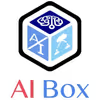MTL-Data-To-Text
| Property | Value |
|---|---|
| License | Apache 2.0 |
| Paper | MVP: Multi-task Supervised Pre-training for Natural Language Generation |
| Primary Tasks | Text2Text Generation, Data-to-Text Conversion |
| Framework | PyTorch, Transformers |
What is mtl-data-to-text?
MTL-data-to-text is a specialized transformer model designed for converting structured data into natural language text. It's a variant of the MVP (Multi-task Supervised Pre-training) family, specifically optimized for data-to-text generation tasks. The model employs a standard Transformer encoder-decoder architecture and has been trained on a diverse mixture of labeled datasets.
Implementation Details
The model is built on the transformer architecture and is particularly adept at handling various data-to-text scenarios, including KG-to-text generation (WebNLG, DART), table-to-text generation (WikiBio, ToTTo), and MR-to-text generation (E2E). It utilizes the MVP tokenizer and can be easily implemented using the Hugging Face transformers library.
- Transformer encoder-decoder architecture for optimal sequence processing
- Supervised pre-training on multiple data-to-text datasets
- Compatible with standard PyTorch and Transformers frameworks
Core Capabilities
- Knowledge Graph to text conversion
- Table-to-text generation
- Meaning Representation (MR) to text transformation
- Natural language description generation from structured data
- Multi-task learning capabilities
Frequently Asked Questions
Q: What makes this model unique?
The model's uniqueness lies in its specialized training on multiple data-to-text tasks and its ability to handle various structured data formats while generating natural language descriptions. It's part of the MVP family but specifically optimized for data-to-text conversion tasks.
Q: What are the recommended use cases?
The model is best suited for applications requiring the conversion of structured data into natural language, such as generating descriptions from knowledge graphs, creating natural language summaries from tables, and transforming meaning representations into readable text. It's particularly valuable in automated content generation and data documentation scenarios.







